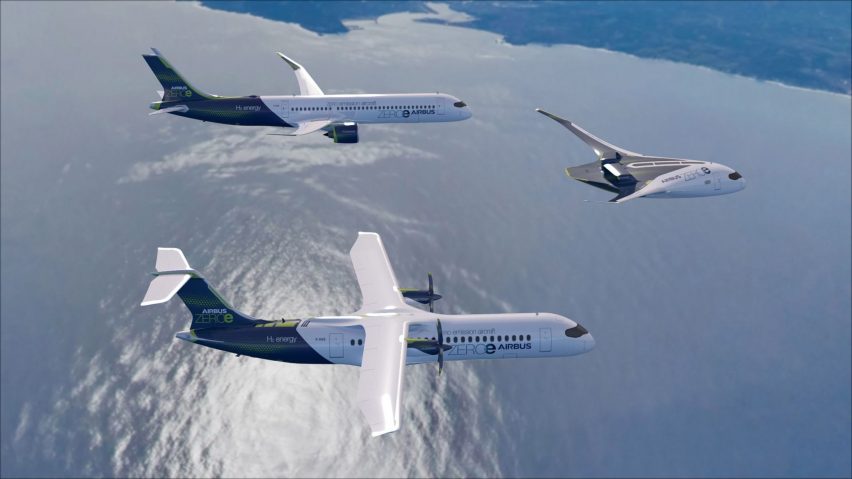
Airbus unveils concept for world's "first zero-emission commercial aircraft"
Aircraft manufacturer Airbus has revealed three concepts for zero-emission commercial aircraft that would be powered by hydrogen and could be in service by 2035.
Named ZEROe, the concepts were each designed to show a different way Airbus could achieve zero-emission flights.
The company revealed visuals of three hybrid-hydrogen aeroplanes, featuring hydrogen-powered turbine engines supplemented by electricity generated by fuel cells.
One is powered by a turbofan, another has a turboprop power system and a third has a "blended-wing body" with hybrid-hydrogen turbofans at the rear.
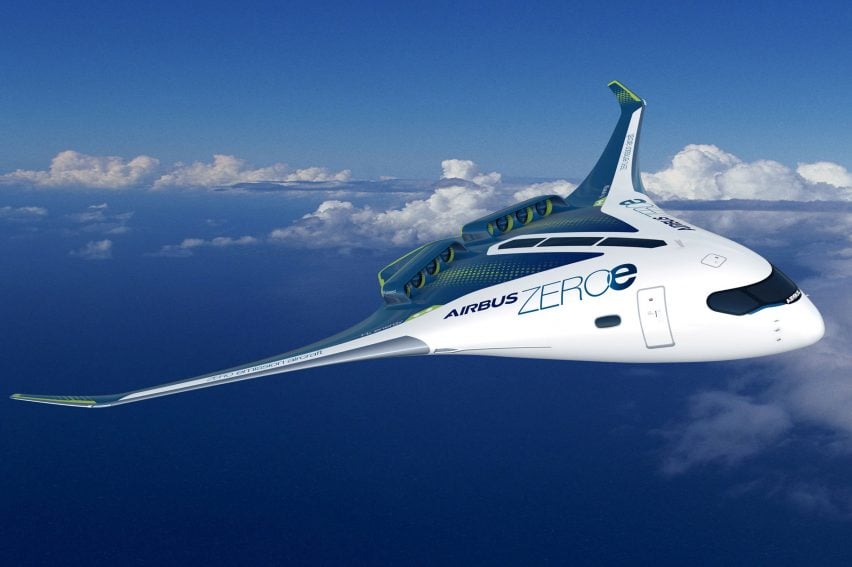
Airbus' created the concepts to demonstrate how the aviation industry could reduce its environmental impact.
"I strongly believe that the use of hydrogen – both in synthetic fuels and as a primary power source for commercial aircraft – has the potential to significantly reduce aviation's climate impact," said Airbus CEO Guillaume Faury.
Airbus is aiming to develop the aircraft and put them into production by 2035.
"These concepts will help us explore and mature the design and layout of the world's first climate-neutral, zero-emission commercial aircraft, which we aim to put into service by 2035," continued Faury.
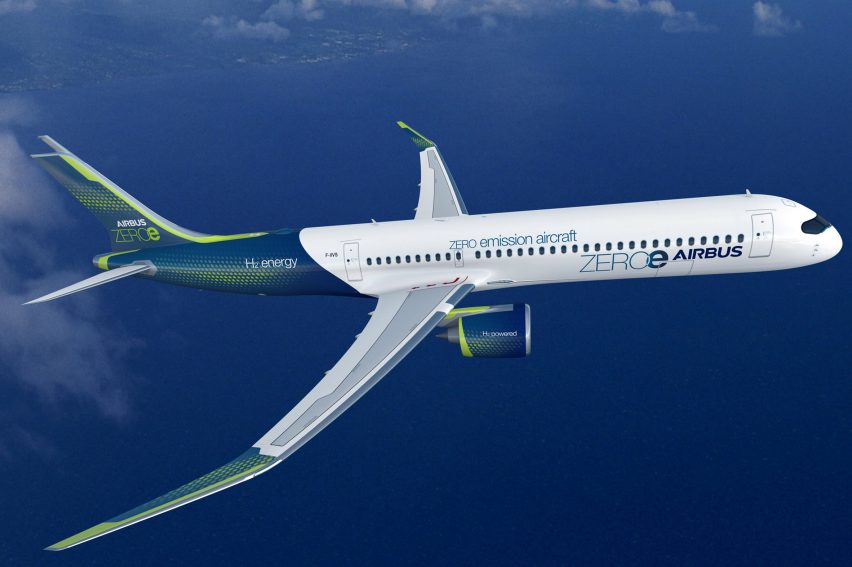
Airbus' turbofan concept aircraft would be able to carry 120 to 200 passengers and have a range of more that 2,000 miles, with the capability of travelling across continents.
Instead of using jet fuel, the craft would be powered by a modified gas-turbine engine running on hydrogen through combustion. The hydrogen would be stored and distributed from tanks located behind the plane's rear pressure bulkhead.
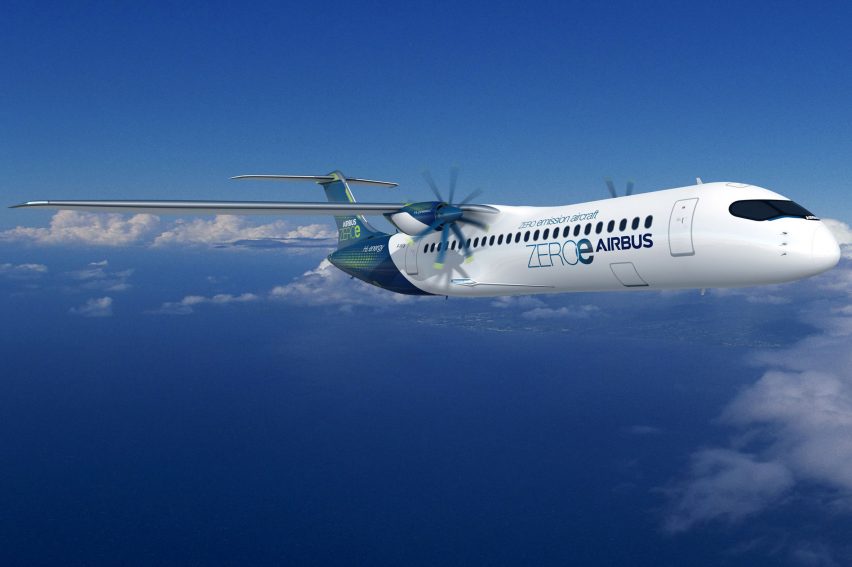
With a similar range to the turbofan concept, the plane with a "blended-wing body" would be able to hold up to 200 passengers.
The aircraft, which would have wings merged with its body, has an exceptionally wide fuselage that creates multiple options for both hydrogen storage and distribution and cabin layout.
The turboprop design is also powered by hydrogen combustion in modified gas-turbine engines but uses a turboprop engine instead of a turbofan. It would be able to carry up to 100 passengers for more than 1,000 miles.
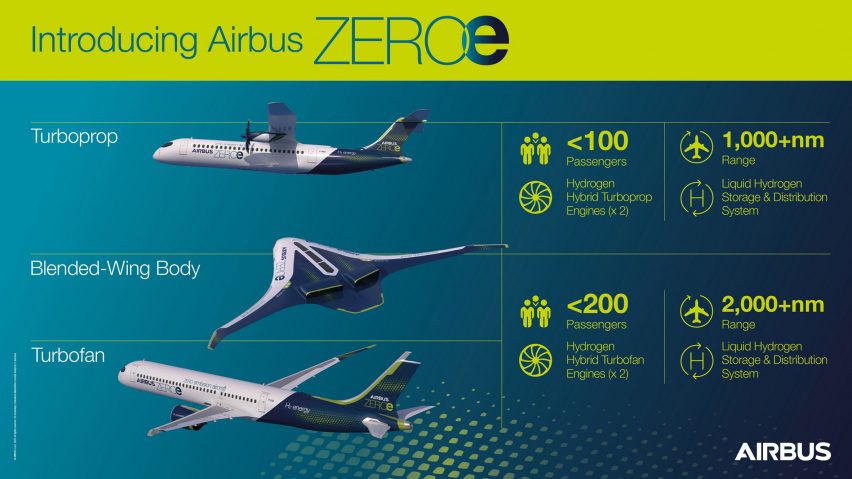
In order to make the transition to zero-emission aircraft, airports would require significant infrastructure for transporting and refuelling the hydrogen, which would require supports from governments said the manufacturer.
"The transition to hydrogen, as the primary power source for these concept planes, will require decisive action from the entire aviation ecosystem," added Faury.
Last year, Australian engineering firm MagniX' Harbour Air ePlane, the world's first commercial electric plane, completed a test flight in Canada. The plane seats six and is powered by a high-power-density electric propulsion system.
Airbus recently unveiled a working model of its fuel-saving Maveric aircraft which, like the zero-emission design above, has a "blended-wing body" design. The company is also working with architecture firm MVRDV to explore how vertiports, landing hubs for passenger drones, could become a part of future transportation networks.
Photography is by Airbus.